| Japanese | English |
In this report, the analysis method of heartbeat by DSSF3 is summarized from the heartbeat measurement results reported before
The calculation conditions in SA is as below.
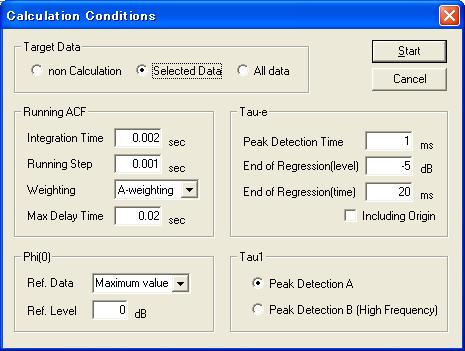
The data portion shown below is the first heartbeat. The first heart sound begins at 4.2 s and the second heart sound begins at 4.55 s.
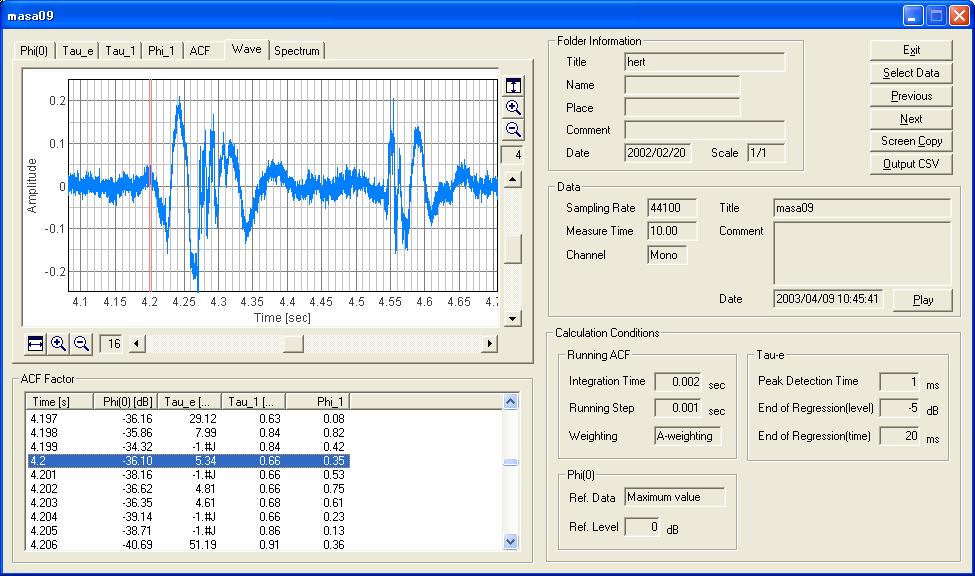
Similarly, the second heartbeat begins at 5.05 s. In the next figure, the first and the second sound of the second heartbeat is shown.
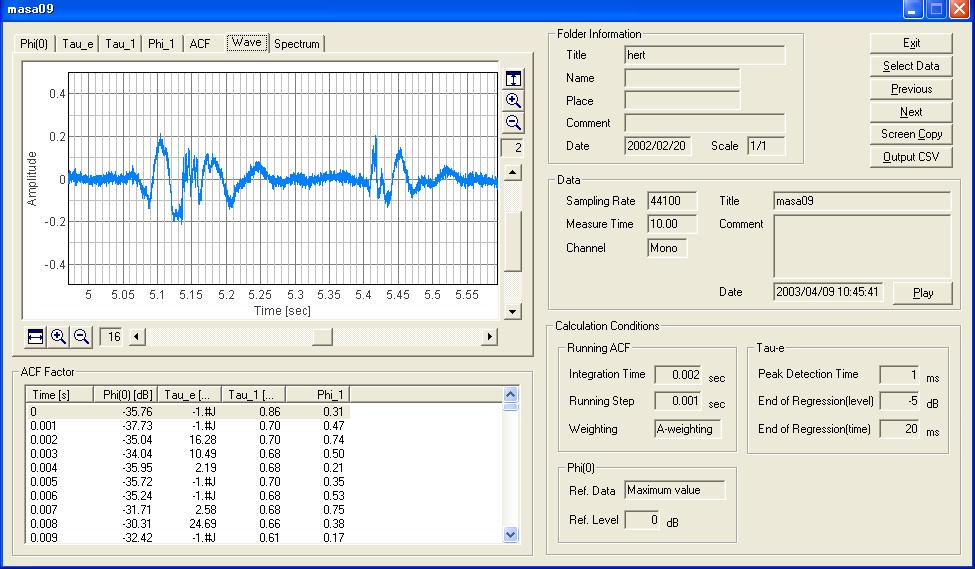
The third beat begins at 5.95 s.
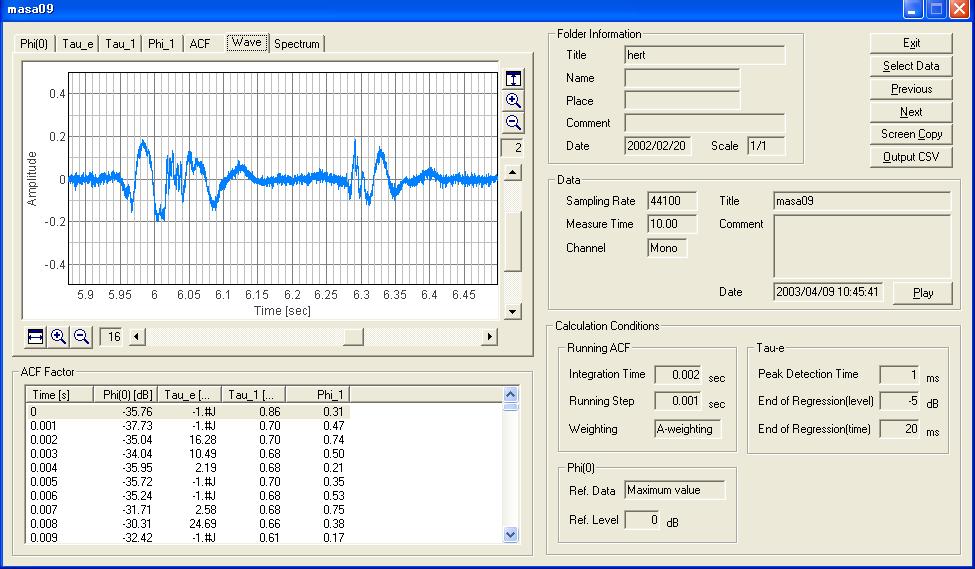
The fourth beat begins at 6.83 s.
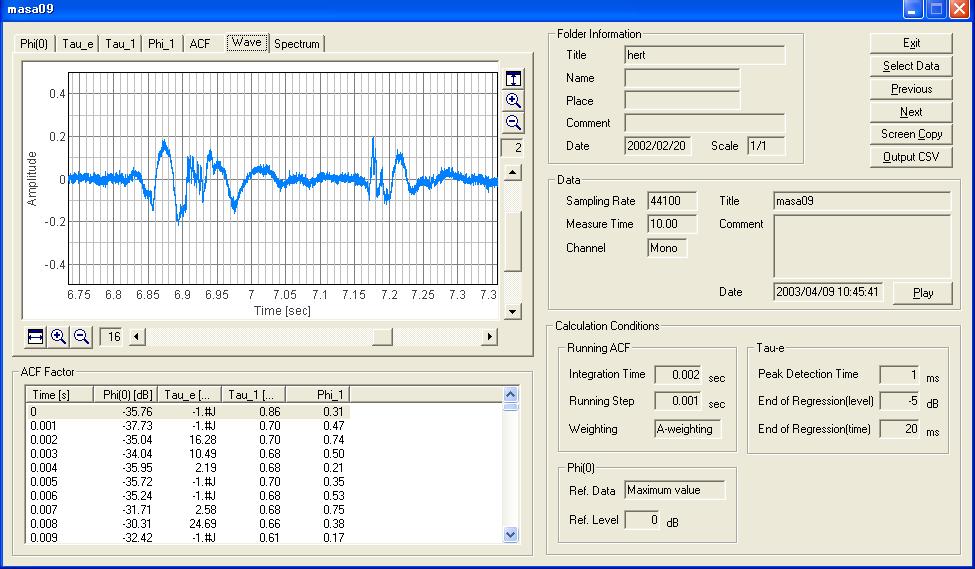
From the beginning time of the first and the second heart sounds, the heartbeat interval is measured. The beginning time of the beats is found as the maximum amplitude in the temporal waveform. For example, in the first beat, the first sound begins at 4.26s and the second sound begins at 4.55 s. From the heartbeat interval, the heartbeat rate is calculated as 1 / interval * 60 (beats / min). Results are summarized in the following table.
Interval of first sounds and the heartbeat rate
| 1st to 2nd beat | 4.26 s to 5.13 s | 0.87 s | 69 beats / min |
| 2nd to 3rd beat | 5.13 s to 6.01 s | 0.88 s | 68 beats / min |
| 3rd to 4th beat | 6.01 s to 6.89 s | 0.88 s | 68 beats / min |
Interval of second sounds and the heartbeat rate
| 1st to 2nd beat | 4.55 s to 5.41 s | 0.86 s | 70 beats / min |
| 2nd to 3rd beat | 5.41 s to 6.29 s | 0.88 s | 68 beats / min |
| 3rd to 4th beat | 6.29 s to 7.17 s | 0.88 s | 68 beats / min |
Intervals between the first sound and the second sound are found as follows.
| 1st beat | 4.26 s to 4.55 s | 0.29 s |
| 2nd beat | 5.13 s to 5.41 s | 0.28 s |
| 3rd beat | 6.01 s to 6.29 s | 0.28 s |
| 4th beat | 6.89 s to 7.17 s | 0.28 s |
If the abnormal rate or the amplitude were observed in the heartbeat, detailed sound analysis is needed. It is important to examine, for example, whether is the abnormality is due to the measurement procedure or due to the arrhythmic.
In DSSF3, the sound analysis is performed by use of the running ACF. In this analysis, the sound qualities are analyzed quantitatively as is perceived by humans. This analysis allows us to diagnose the heart disease correctly.
The acoustic parameters analyzed in DSSF3 are Phi(0): sound level, Tau_1: pitch, Phi_1: pitch strength, and Tau_e: effective duration of the ACF, which represents the reverberant component of sound.
The first sound and the second sound are analyzed by the running ACF with the calculation conditions as shown below. The integration time is set to 0.1 s and the running step is set to 0.005 s.
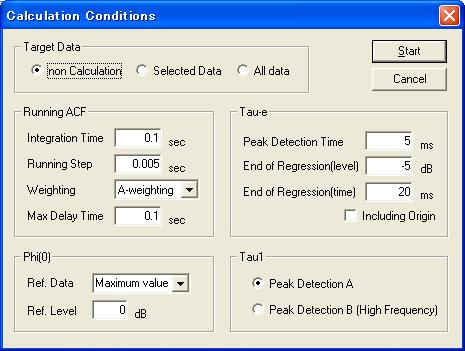
See the heartbeat measurement 6 for the results of the first beat.
The second beat is analyzed as follows. In the next figure, the temporal waveform of the second beat is zoomed in to the first sound. The ACF parameters are listed in the data table below the graph.
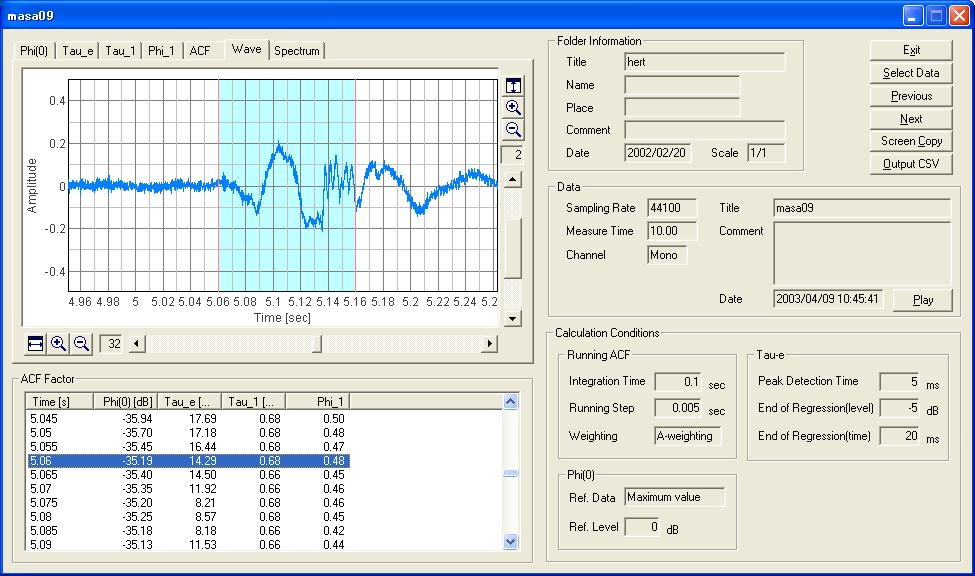
Analysis result is summarized as following.
| First sound component | Phi(0) | Tau_1 | Phi_1 | Tau_e |
| 1st beat begins at 4.2 s | -34.5 dBA | 0.68 ms | 0.50 | 10.6 ms |
| 2nd beat begins at 5.06 s | -35.2 dBA | 0.68 ms | 0.48 | 14.29 ms |
Same analysis is performed on the all recorded beats.
Next, the timing of the heart valve closure is analyzed as follows. This is the same analysis reported in Heartbeat measurement 7. This time, the integration time and the running step are set to small values to perform the high time resolution analysis.

As reported in Heartbeat measurement 7, the timing of the valve closure is found at the volley in the Tau_1 graph.
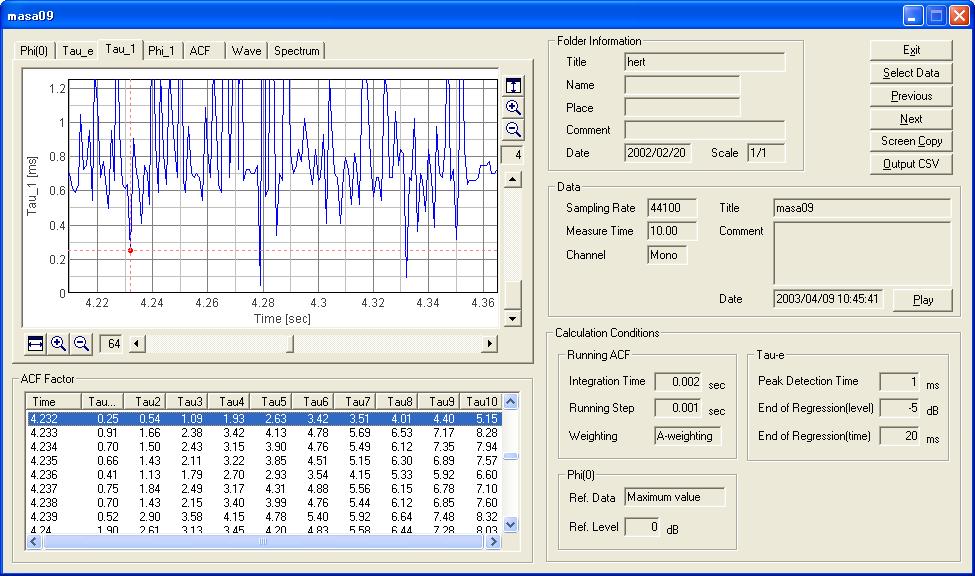
I finish the analysis report of the heartbeat. In summary, it is important to identify the timing of the heart valve closure. Valve closure is a source of the heart sound, and the heartbeat rate is calculated from this timing. Further, I analyzed the sound quality at this timing.
I hope that, in the future, the sound analysis summarized in this report will be performed in real time by using our Real-time multidimensional sound analysis for medical diagnosis. The purpose of this software is to perform a series of the sound analysis in real time with multiple time resolution. By this software, it will become possible to detect the abnormality in the heartbeat, to analyze the operation of heart valves, and to supervise the patient's health condition.
July 2004 by Masatsugu Sakurai